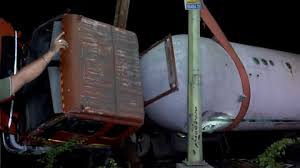Newly proposed §1.30D-2(j) through (m) are proposed to apply to new clean vehicles placed in service on or after January 1, 2024, for taxable years ending after December 31, 2023. Proposed §1.30D-6(d)(2)(iii) would provide rules for decreasing or increasing the balance of the compliant-battery ledger. Specifically, once the compliant-battery when does your business need a w ledger is established with respect to a calendar year, the qualified manufacturer must determine and take into account any decrease in the number of FEOC-compliant batteries for such calendar year, and any of the prior three calendar years for which the qualified manufacturer had a compliant-battery ledger, within 30 days of discovery.
- Consequently, if they had not previously reduced wage expense by any of the claimed ERC, participants need not file amended returns or Administrative Adjustment Requests (AARs) to reduce wage expense.
- Thus, the contributions must be reported using Form 1099-R, for the year in which the contributions are made to the employee’s Roth IRA, with the total reported in boxes 1 and 2a of Form 1099-R, using code 2 or 7 in box 7, and the IRA/SEP/SIMPLE checkbox in box 7 checked.
- Matching contributions and nonelective contributions that are made to an IRA under a SIMPLE IRA plan or SEP arrangement are excluded from wages under section 3121(a)(5)(C) and (H).
Today, thanks to several factors such as rising inflation, high deficits, supply chain issues, and industry-specific concerns, LIFO has re-entered the policy discussion. While repealing LIFO might seem like an inconsequential way to raise revenue, it would penalize investment in inventory and move the tax system away from neutrality towards investment. During periods of inflation, LIFO can lead to lower taxable income due to higher reported COGS. However, this can result in a lower net income on financial statements, which may not align with a business’s strategic objectives or investor expectations.
LIFO vs. FIFO: Inventory Valuation
If you do business globally, you’ll need to stick with FIFO or another approved inventory valuation method since the international accounting standards body (IFRS) prohibits the use of LIFO. Inventory valuation is a pivotal aspect of financial reporting and management for businesses handling physical inventory. Two predominant methods used are FIFO (First-In, First-Out) and LIFO (Last-In, First-Out). This article offers an in-depth comparison of FIFO vs LIFO, highlighting how each inventory valuation method can influence your business’s financial health and decision-making processes.
- Your reported profit on the sale would be 90 cents, and you would now have 99 bottles in inventory – 49 at a cost of $1.10 and 50 at a cost of $1.15.
- A qualified manufacturer would not include any manufacturer whose qualified manufacturer status has been terminated by the IRS.
- The preceding sentence shall not apply to any matching contribution (as defined in section 401(m) of the Code) made by reason of such an election.” This provision is commonly referred to as the contingent benefit rule.
- LIFO, however, assumes the reverse, which can be more financially strategic in certain economic conditions but may not align with the physical inventory movement.
- Of all the current assets on a firm’s balance sheet, it is likely that inventory is the largest asset category in terms of value.
The QPA is the basis for determining individual cost sharing for items and services covered by the balance-billing protections in the NSA, under certain circumstances. The QPA for a given calendar year is based on information regarding median rates for certain items and services from prior years and is indexed based on changes in the consumer price index. In addition to providing the indexing factor for adjusting 2023 amounts for 2024, the notice also provides cumulative adjustments for prior years and examples of how to apply the percentage increases.
What Is Merchandising Inventory?
This creates a problem when you sell a bottle of ketchup, because you must include the cost of that bottle to your cost of goods sold, or COGS expense. You have to decide whether you’ve sold an “old” bottle, in which case your COGS is $1.10, or a “new” bottle, in which case it’s $1.15. The higher COGS under LIFO decreases net profits and thus creates a lower tax bill for One Cup. This is why LIFO is controversial; opponents argue that during times of inflation, LIFO grants an unfair tax holiday for companies.
However, the employee should retain both the underlying documentation and a copy of the certification for the employee’s tax records (as required by section 6001). The Treasury Department and the IRS intend to issue regulations under section 72(t) of the Code, including providing guidance on exceptions under section 72(t)(2) as added by the SECURE 2.0 Act (such as the exception to the 10 percent additional tax for an eligible distribution to a domestic abuse victim). For purposes of determining whether an employer has no more than 25 employees who received at least $5,000 of compensation for the preceding year, there generally is a 2-year grace period. As well, the LIFO method may not actually represent the true cost a company paid for its product.
Understanding the Tax Treatment of Inventory: The Role of LIFO
Among other exceptions, section 414A(c)(2)(A)(i) and (ii) provides that section 414A(a) does not apply to any qualified CODA established before the date of the enactment of section 101 of the SECURE 2.0 Act (December 29, 2022) or to any annuity contract purchased under a plan established before the date of the enactment of section 101 of the SECURE 2.0 Act. For purposes of this notice, a qualified CODA or section 403(b) plan that is established before December 29, 2022, is called a pre-enactment qualified CODA or pre-enactment section 403(b) plan. This notice sets forth updates on the corporate bond monthly yield curve, the corresponding spot segment rates for December 2023 used under § 417(e)(3)(D), the 24-month average segment rates applicable for December 2023, and the 30-year Treasury rates, as reflected by the application of § 430(h)(2)(C)(iv).
What Impact Does the Inventory Method Have on Financial Ratios?
Brad would now like to run a report for his partners that shows the cost of goods sold. Proponents of taxing LIFO reserves argue it is efficient because it is retroactive and ergo does not change future incentives to work or invest. But repealing LIFO does not just tax accumulated LIFO reserves—it will change incentives for future inventory investments. Your reported profit on the sale would be 90 cents, and you would now have 99 bottles in inventory – 49 at a cost of $1.10 and 50 at a cost of $1.15. Since prices tend to rise rather than fall over the long term, then using FIFO will generally produce a larger profit which in turn means a larger tax bill.
EMPLOYEE PLANS, EXCISE TAX
1 Pursuant to § 433(h)(3)(A), the third segment rate determined under § 430(h)(2)(C) is used to determine the current liability of a CSEC plan (which is used to calculate the minimum amount of the full funding limitation under § 433(c)(7)(C)). Generally, the IRS will consider only the items on the 2023 Cumulative List in determining whether to issue a Cycle 4 opinion letter with respect to a pre-approved plan. However, if a plan has not been previously reviewed and is submitted for Cycle 4 (or has been amended with respect to previously approved language), the IRS will also review the plan for items on earlier Cumulative Lists3 as well as for any other applicable qualification requirements that were considered by the IRS in issuing opinion letters prior to the implementation of Cumulative Lists.
COGS During Rising Prices and Falling Prices Depending on Accounting Method
Proposed §1.30D-3(e) would provide for an upfront review of conformance with the critical minerals requirement and battery components requirement. Specifically, proposed §1.30D-3(e) would provide that for new clean vehicles placed in service after December 31, 2024, the qualified manufacturer must provide attestations, certifications and documentation demonstrating compliance with the requirements of section 30D(e), at the time and in the manner provided in the Internal Revenue Bulletin. The IRS, with analytical assistance from the DOE, will review the attestations, certifications, and documentations. Whether an entity is a FEOC is determined as of the time of the entity’s performance of the relevant activity, which for applicable critical minerals is the time of extraction, processing, or recycling, and for battery components is the time of manufacturing or assembly. The determination of whether an applicable critical mineral is FEOC-compliant is determined at the end of processing or recycling of the applicable critical mineral into a constituent material, taking into account all applicable steps through and including final processing or recycling. Proposed §1.30D-6(f)(3) would provide guidance for cases of intentional disregard or fraud.










